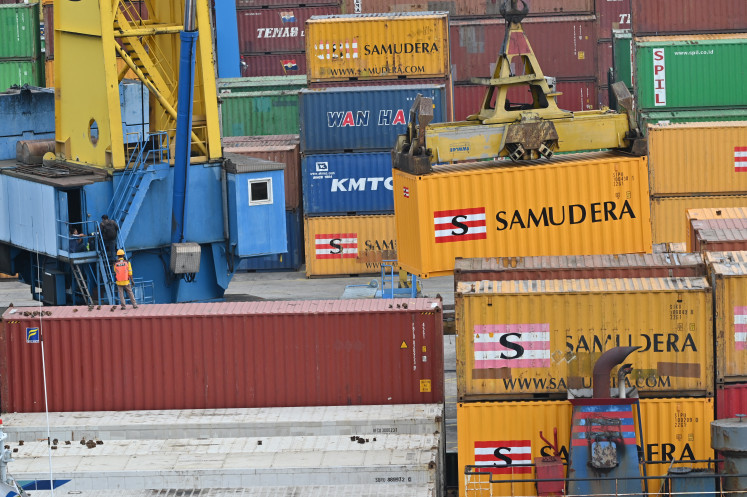Popular Reads
Top Results
Can't find what you're looking for?
View all search resultsPopular Reads
Top Results
Can't find what you're looking for?
View all search resultsSeaweed: Answer to some global challenges
From sushi to ice cream and candy, even shampoo to house paints, medication, car lubricants and much more
Change text size
Gift Premium Articles
to Anyone
F
rom sushi to ice cream and candy, even shampoo to house paints, medication, car lubricants and much more. These are the daily household products that are developed from seaweed, aquatic cultured-grass that can be planted in the calm and clear water of coastal areas.
Once harvested, dry seaweed can be processed to produce more than 350 end products, from simple candies to high-grade pharmaceutical products and future bioenergy resources.
The world is facing enormous challenges, among them to reduce global hunger, food insecurity, malnutrion and eradicating poverty.
Concerted global efforts in the past 20 years have enabled the reduction of global hunger from 20 percent in 1990 to 15 percent in 2012, however, is still around 870 million people.
In the meantime, efforts to provide better nutrition for the global population have been continuously strengthened, while efforts to reduce the number of people living below the poverty line are being tackled through direct assistance, social safety nets, community empowerment and job creation.
Seaweed culture may be the answer to some of the challenges. To plant rice, for example, requires a piece of land, primary seeds, fertilizers and planting techniques before rice can be harvested 90 days later.
To culture seaweed, however, only a calm and clean coastal area, ropes, seaweed seeds and disposable plastic bottles for flotation are needed.
No fertilizer or special treatments are required, and within 45 days seaweed can be harvested and dried.
The dried seaweed is then processed to become alkali-treated carrageenan and semi-refined carrageenan, ready to become raw materials for candy and various kinds of snacks.
The industrial-processed seaweed products are mostly used in the pharmaceutical industry, textile industry and construction industry.
Besides providing a livelihood for coastal communities and creating jobs, seaweed is also rich in iodine. It is worth noting that around 800 million of the global population have iodine deficiency.
With its 81,000-kilometer-long coastline, Indonesia has great potential for seaweed production. Food and Agriculture Organization (FAO) data of 2011 positioned Indonesia as the world's second-largest seaweed producing country after China, with 5.2 million tons of dried seaweed, approximately 25 percent of global production.
The Indonesian vision for seaweed is crystal clear. There are 1.1 million hectares of coastal area ready for seaweed cultivation. Production will be doubled to 10 million tons in 2014.
An integrated seaweed development program is being introduced by combining the management of cultivation, seed availability, post-harvest management and marketing in an integrated manner to increase value added, efficiency and economies of scale so that the implementation will involve large number of people.
This policy will not only increase foreign exchange but also provide jobs and prosperity for seaweed farmers and promote seaweed cultivation for micro, small and medium enterprises.
The success of Indonesia in seaweed culture should also be shared with other countries. The FAO has carried out an assessment on the latest progress on global seaweed production, particularly in the five major producing countries, i.e. China, Indonesia, the Philippines, South Korea and Japan. This assessment will be showcased on an International Seaweed Seminar in Jakarta in October.
Meanwhile, the FAO and the International Labor Organization (ILO) together with the Office of the Coordinating People's Welfare Minister, the Maritime Affairs and Fisheries Ministry, and Development of Disadvantaged Regions Ministry have embarked on an initial seaweed program in East Nusa Tenggara province under a South-South Cooperation program, which may be replicated in other neighboring countries, such as Timor Leste.
Through combined efforts and mobilized resources through seaweed, together we could tackle some of the global challenges and achieve our common goals of reducing hunger and malnutrition, creating jobs and eradicating poverty, particularly in rural coastal areas.
_____________________
There are 1.1 million hectares of coastal area ready for seaweed cultivation. Production will be doubled to 10 million tons in 2014.
The writer is Food and Agriculture Organization (FAO) director of Fisheries and Aquaculture Resources Use and Conservation Division. This is his personal view.










